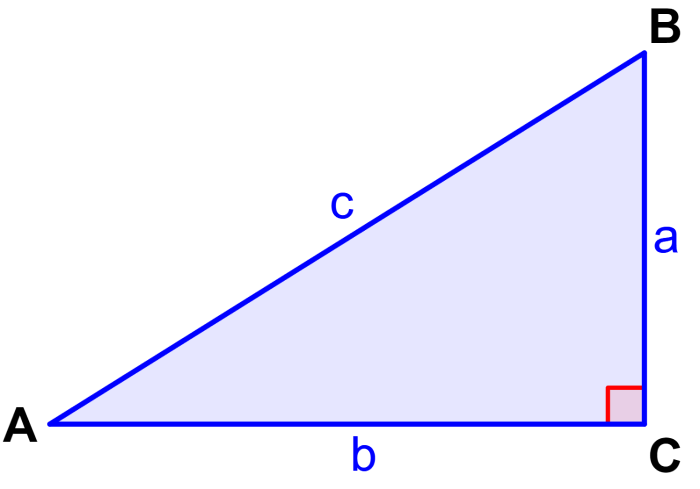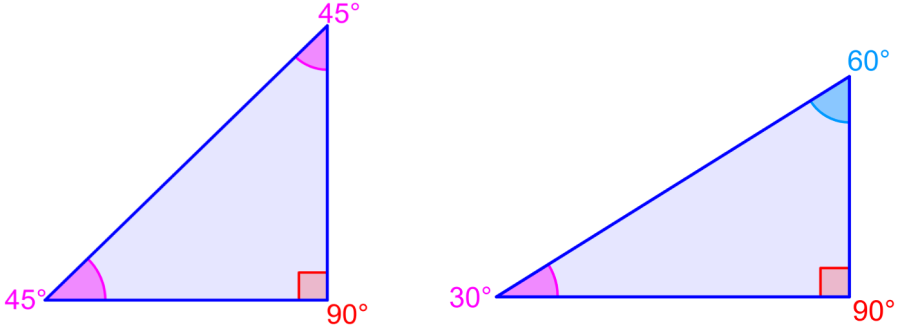The secant of an angle can be calculated by relating the sides of a right triangle. The secant is defined as the reciprocal function of the cosine, so it is equal to the length of the hypotenuse over the length of the adjacent side. The secant of the most important angles are obtained by using the proportions of the known special triangles.
Here, we will learn about secant using diagrams. We will derive a formula and apply it to solve some practice problems.
Definition of secant of an angle
The secant of an angle in a right triangle is defined as the length of the hypotenuse divided by the length of the side adjacent to the angle.
Additionally, we can also define the secant of an angle as the reciprocal of the cosine. This is because the cosine is defined as the adjacent side on the hypotenuse, so by taking its reciprocal, we obtain the secant.
$latex \sec (\theta)=\frac{1}{\cos}=\frac{H}{A}$
where H is the hypotenuse and A is the adjacent side.
Formula for the secant in right triangles
We are going to use the following right triangle ABC that has a right angle at C to find the ratio of the secant of an angle.

We use lowercase letters to represent the lengths of the sides and we use capital letters to represent the angles of the triangle. For example, the letter a represents the side that is opposite angle A, the letter b represents the side that is opposite angle B, and the letter c represents the side that is opposite angle C.
The secant of an angle in a triangle rectangle is equal to the hypotenuse divided by the adjacent side:
| $latex \sec=\frac{\text{hypotenuse}}{\text{adjacent}}$ |
In the triangle above, we have $latex \sec(A)=\frac{c}{b}$ and also $latex \sec(B)=\frac{c}{a}$.
Secant for common special angles
We can use the proportions of the sides of special triangles to find the values of the secants of important angles. For example, we can consider the right isosceles triangle, which has angles 45°-45°-90°.
We find its proportions using the Pythagorean theorem: $latex {{c}^2}={{a}^2}+{{b}^2}$, but in this case, $latex a=b$, so we have $latex {{c}^2}=2{{a}^2}$. We conclude that $latex c = a \sqrt{2}$. Therefore, the secant of 45° is equal to $latex \sqrt{2}$.

Additionally, we also use the right triangle with angles 30°-60°-90°. The ratios of the sides of this triangle are 1: $latex \sqrt{3}$: 2. Using these proportions, we have $latex \sec(30^{\circ}) = \frac{2}{\sqrt{3}}$, which is equivalent to $latex \frac{2 \sqrt{3}}{3}$. We also have $latex \sec(60^{\circ})= 2$.
Finally, we can consider the angles 0 and 90°. When the angle is 0, the adjacent side like the hypotenuse is equal to 1 in the unit circle, so the secant of 0 is equal to 1. On the other hand, when the angle is 90°, the adjacent side is equal to 0 and the hypotenuse is equal to 1. However, we cannot divide by 0, so the secant of 90° is undefined.
| Degrees | Radians | Secant |
| 90° | $latex \frac{\pi}{2}$ | Undefined |
| 60° | $latex \frac{\pi}{3}$ | $latex 2$ |
| 45° | $latex \frac{\pi}{4}$ | $latex \sqrt{2}$ |
| 30° | $latex \frac{\pi}{6}$ | $latex \frac{2\sqrt{3}}{3}$ |
| 0° | 0 | 1 |
Secant of an angle – Examples with answers
The following examples are solved using the secant formula seen above. Each of the following examples refers to the right triangle shown above, so we use the same notation for the sides and angles.
EXAMPLE 1
What is the value of b if we have $latex \sec(A)= 1.7$ and $latex c = 5$?
Solution
We use the right triangle above and look at the relationship $latex \sec(A) = \frac{c}{b}$. Therefore, we use this relation together with the given values to find the value of b:
$latex \sec(A)=\frac{c}{b}$
$latex 1.7=\frac{5}{b}$
$latex b=\frac{5}{1.7}$
$latex b=2.94$
The value of the b side is equal to 2.94.
EXAMPLE 2
If we have $latex a=8$ and $latex \sec(B) = 1.44$, determine the value of c.
Solution
Using the right triangle above as a reference, we have $latex \sec(B) = \frac{c}{a}$. We use this relationship in conjunction with the given values to determine the value of c:
$latex \sec(B)=\frac{c}{a}$
$latex 1.44=\frac{c}{8}$
$latex c=1.44(8)$
$latex c=11.52$
The value of the hypotenuse is 11.52.
EXAMPLE 3
If we have $latex c = 2$ and $latex b = \sqrt{3}$, what is the value of angle A?
Solution
Using the right triangle above as a reference, we can form the following relation $latex \sec(A) = \frac{c}{b}$. Therefore, using the given values, we have:
$latex \sec(A)=\frac{c}{b}$
$latex \sec(A)=\frac{2}{\sqrt{3}}$
$latex \sec(A)=\frac{2\sqrt{3}}{3}$
Using a calculator with the function $latex {{\sec}^{-1}}$ or using the table above, we know that we have:
$latex A=30$°
Angle A measures 30°.
→ Secant Calculator (Degrees and Radians)
Secant of an angle – Practice problems
Use what you have learned about the secant of an angle to solve the following problems. These problems refer to the right triangle seen above, so they use the same notation for sides and angles.
See also
Interested in learning more about secant, cosecant, and cotangent? Take a look at these pages:




